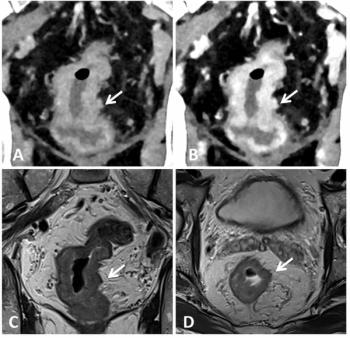
Deadly disease shadows MRI contrast exams
Nephrogenic systemic fibrosis, a rare but deadly disease linked to gadolinium-based MR contrast media, emerged as a hot topic this spring.
Nephrogenic systemic fibrosis, a rare but deadly disease linked to gadolinium-based MR contrast media, emerged as a hot topic this spring.
As of June 1, 239 cases of NSF were confirmed worldwide. Incidence of the disease, first associated with gadolinium contrast in 1997, has thus far been limited to patients with severe renal failure. Symptoms appeared after intravenous administration of a chelated-gadolinium contrast agent before MRI or MR angiography. Most of the cases are associated with gadodiamide (Omniscan), but cases have been diagnosed after exposure to Gd-DPTA (Magnevist) and other agents as well.
In May, the FDA asked manufacturers of all five gadolinium agents cleared for sale in the U.S. to carry a "black box" warning describing the risk of developing NSF for patients with severe renal disease. The agency recommended that patients should be screened for kidney problems before receiving a gadolinium-based MR agent. The recommended dose should not be exceeded and enough time should elapse to ensure that a dose has been eliminated from the body before the agent is used again, it said in a release.
The European Union introduced in February a strict contraindication for the use of Omniscan in patients with severe renal failure and ordered a warning for all gadolinium products.
Radiologists expressed a range of opinion concerning the prudent use of gadolinium contrast in May at a symposium on NSF jointly sponsored by the International Society for Magnetic Resonance in Medicine and the European Society for Magnetic Resonance in Medicine and Biology. Panelists recommended against use of double and triple dosing. Some supported alternatives to contrast-enhanced MR for susceptible patients, while others said they are performing dialysis on each of the three days following contrast-enhanced MRI on patients with severe kidney problems.
NSF is a horrific form of sclerosis, said Yale University dermatopathologist Dr. Shawn Cowper. The victims' skin hardens and loses flexibility. Hand and finger mobility is lost. Ankle contractures are seen in 35% of patients, often leaving them wheelchair-bound.
Newsletter
Stay at the forefront of radiology with the Diagnostic Imaging newsletter, delivering the latest news, clinical insights, and imaging advancements for today’s radiologists.



























